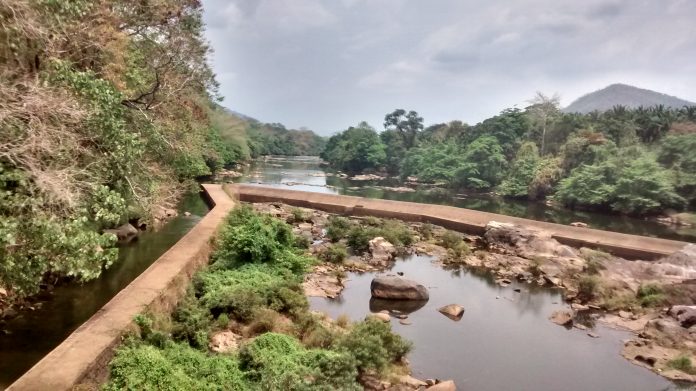
This is the first in a two-part series on the proposed Athirapally dam in the Thrissur district of Kerala, and how it will destroy the livelihoods of thousands of tribals along with having a catastrophic impact on the extremely delicate and important Western Ghats.
By Amit Kumar, Twocircles.net
It is a hot and humid day as we take a left from National Highway 544 and enter the last leg on the way to the Thumburmuzhy Dam in Thrissur district from Malappuram. The flat highways make way for twisty, curvy roads that rise and drop for the next 100 km. The trees are dry, the leaves wrinkled, and the foliage thin. The Western Ghats, Kerala and Tamil Nadu are suffering the worst droughts in centuries, and the same is visible as we make way to the Dam, located about 20 km before the famous Athirapally walls. Mind you, it is still greener than most parts of India, but the effect of the drought is visible nevertheless. G Krishnan, an environment activist and a local who has been working in this region for the past 17 years, has been waiting patiently for the past few hours for this meeting, and first, I apologise for the delay (there was an issue with the rented bike). He almost dismisses it, but not condescendingly. “We have better things to talk about,” he says, as we enter the Thumburmuzhy garden, which continues to attract a huge number of tourists despite the sweaty, muggy weather. “Looks like it will rain. We do need rains,” says Krishnan as we sit down near the parking lot.
Thumburmuzhy is not a hydroelectric dam. Rather, it is a check dam built by the British in the 1940s and over the past 65 years, this slightly ugly-looking crisscross of concrete right through the Chalakudy riverbed has proved to be one of the most successful irrigation-related projects in the state. “It feeds close to 20,000 hectares of the farming area along with water supply. In Palakkad, Thrissur and Ernakulam, this is nothing short of a lifeline,” says Krishnan as we stand atop the hanging bridge and watch the river.
The reason for me meeting Krishnan, of course, is the controversy over whether Kerala’s ruling party, the CPI (M) will go ahead with the construction of the Athirapally Dam, which is intended to provide about 163 MWs of power to the state. Krishnan explains that the idea of this dam was initially mooted in the 80s by the Kerala State Electricity Board. Although it took seven years for the KSEB to get all approvals, the project was shelved in the wake of public protests.
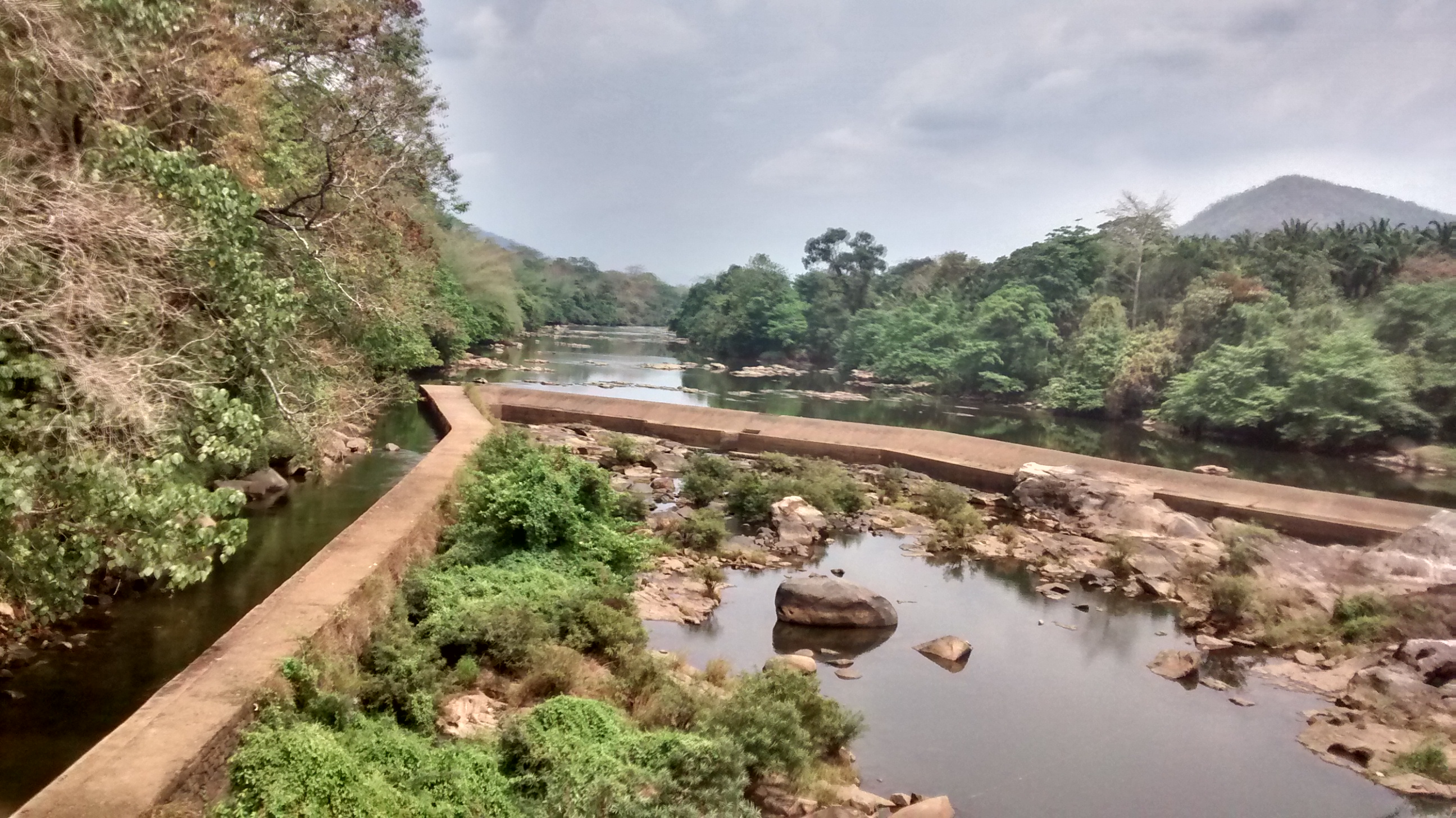
Two-and-a-half-decades later, little seems to have changed, says Krishnan.
“Six hydroelectric dams (four of which are in Tamil Nadu) and one for irrigation have already been constructed along the Chalakkudy river. Due to the nature of these dams, about 20% of the river bed (28 km) receives no water flow for the year,” says Krishnan, referring to a report of Dr Satish Chandran Nair, an expert on the Western Ghats in his submission at a Public Hearing in 2006. The recent drought has once again brought into attention the fragile nature of the forests around it which are home to tigers, leopards, the Great Indian Hornbill, Nilgiri langur, lion-tailed macaque and the rare Cochin forest cane turtle. “The Vazhachal range, which extends all the way to Valaparai in Tamil Nadu, is also an important habitat for the elephants in the region,” he adds.
The construction of dams on the Chalakudy river started as early as the 60s, and with it came the problems too. Krishnan, who clearly has an encyclopaedic knowledge of this region, takes out a hand-drawn map from an old, pale plastic bag. “Look at this,” he says, “Because of the four dams and the dam built in Idukki, the water flow to Periyar river reduced substantially. So, during high tides, seawater would enter Periyar’s river bed and that was proving to be disastrous.” So, to rectify this issue, after the Sholayar dam was made on Kerala side (there is a Sholayar dam on Tamil Nadu’s side too), a part of the river was diverted and the Idumalayar Reserve was built, which led to another barrage, from where fresh water was pumped into Periyar, he adds. Subsequently, one more dam–Peringalkuttu-came up on the Kerala side.
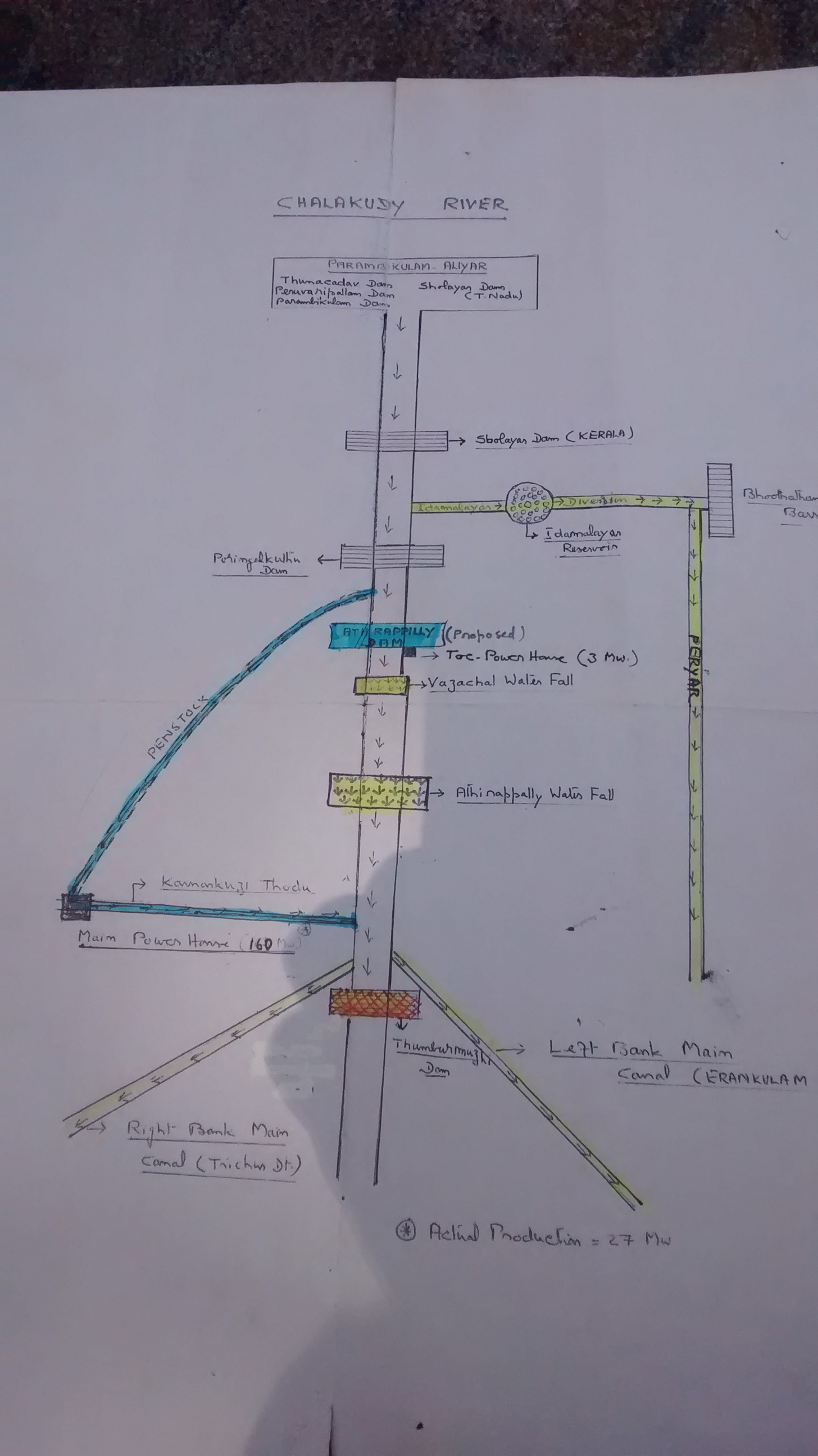
An RTI filed by Krishnan shows that the construction of the dam will lead to a loss of over 70,000 trees. Apart from this, there is the obvious question of the displacement of tribals, which we will focus on in the second part. For the time being, we will focus on why the idea of this dam itself is so problematic.
The end of the mighty Falls? Most definitely
The proposed Athirapally dam will use the tail race water (the water released) from the Peringalkuttu dam. As of now, the project is supposed to generate 163 MWs of electricity (installed capacity). However, the power generation will be much less. “During the monsoon period, you will be able to produce so much, but the main demand for power is during the summer season, and during summers the dam is unlikely to run at its peak capacity for more than 15-20 minutes,” Krishnan adds.
What is also a big cause for worry is that the two generating stations of 80 MWs each of the Athirapally dam are located seven kilometres downstream (See: Image attached). About 80% of the water received at the Athirapally dam reservoir will be diverted to this station via a penstock. Since there is no natural route for the water to flow, this will be done via two huge pipes and then pumped back to the Chalakudy river via another small canal.
This, of course, means a death of the two most beautiful waterfalls in the country, Athirapally and Vazhachal. To counter this, the KSEB proposed a small 3 MW power house below the dam and release 7,650 litres per second through the main river to ‘maintain’ the beauty of the waterfall. “That is exactly half of the water that you see in the waterfalls in this season. If this is what they plan to do with the waterfalls, then you might as well stay at home and watch the toilet flush because the waterfalls will be gone,” says Krishnan sarcastically. The dam will also put an end to the irrigation projects, because, as Krishnan explains, “To maintain the irrigation from Thumburmuzhy, you require a minimum flow of at least 15,000 litres of water per second. The KSEB claims that the irrigation facility is available thanks to the upstream dams which control water flow, which is an absolute lie.”
The project report of the Thumburmuzhy dam shows that even during summers, had a peak capacity of 17,000 litres per second and a maximum of 25,000 litres per second. So, both canals can take up to 12,500 litres of water at the maximum. In short, the amount of water that will be made available to the waterfall is less than the carrying capacity of one of the canals in Thumburmuzhy.
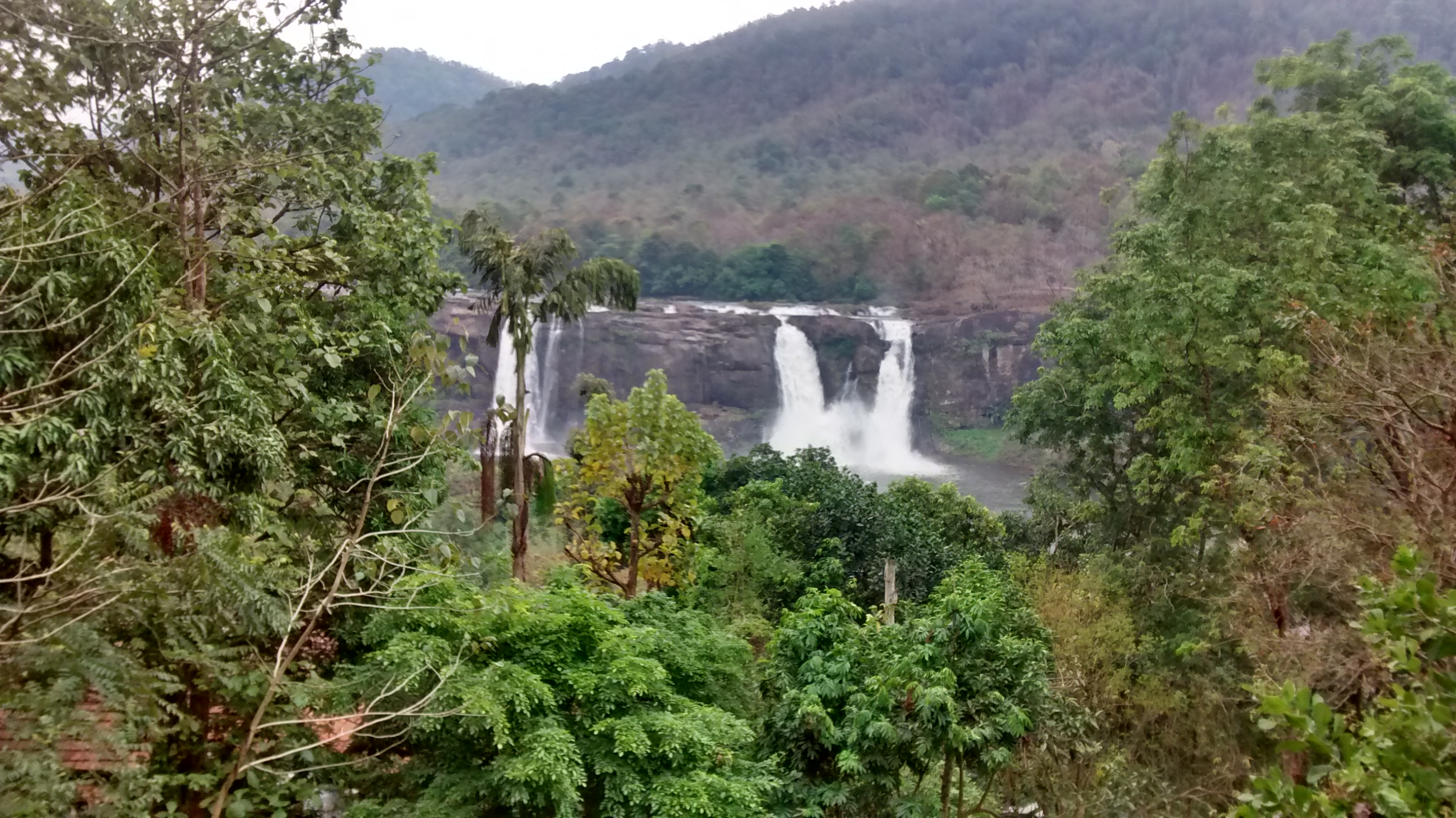
And astonishingly, this is not the end of problems if the dam comes up.
To generate power as per the installed capacity, there is a need for 1.3 lakh litres of water per second, which, as we mentioned earlier, will be transported via two pipes. This water, along with the 7,650 litres of water released for the waterfall, means that the Thumburmuzhy check dam will receive only 7,650 litres of water for about 20 hours a day and an astonishing 1.4 lakh litres of water over the remaining four hours. “So, what will happen in effect is that this check dam will remain almost dry for about 20 hours a day and flooded for the remaining four hours. Also, the canal that is meant to transport the water is too narrow, so the area around it will also be submerged,” Krishnan adds.
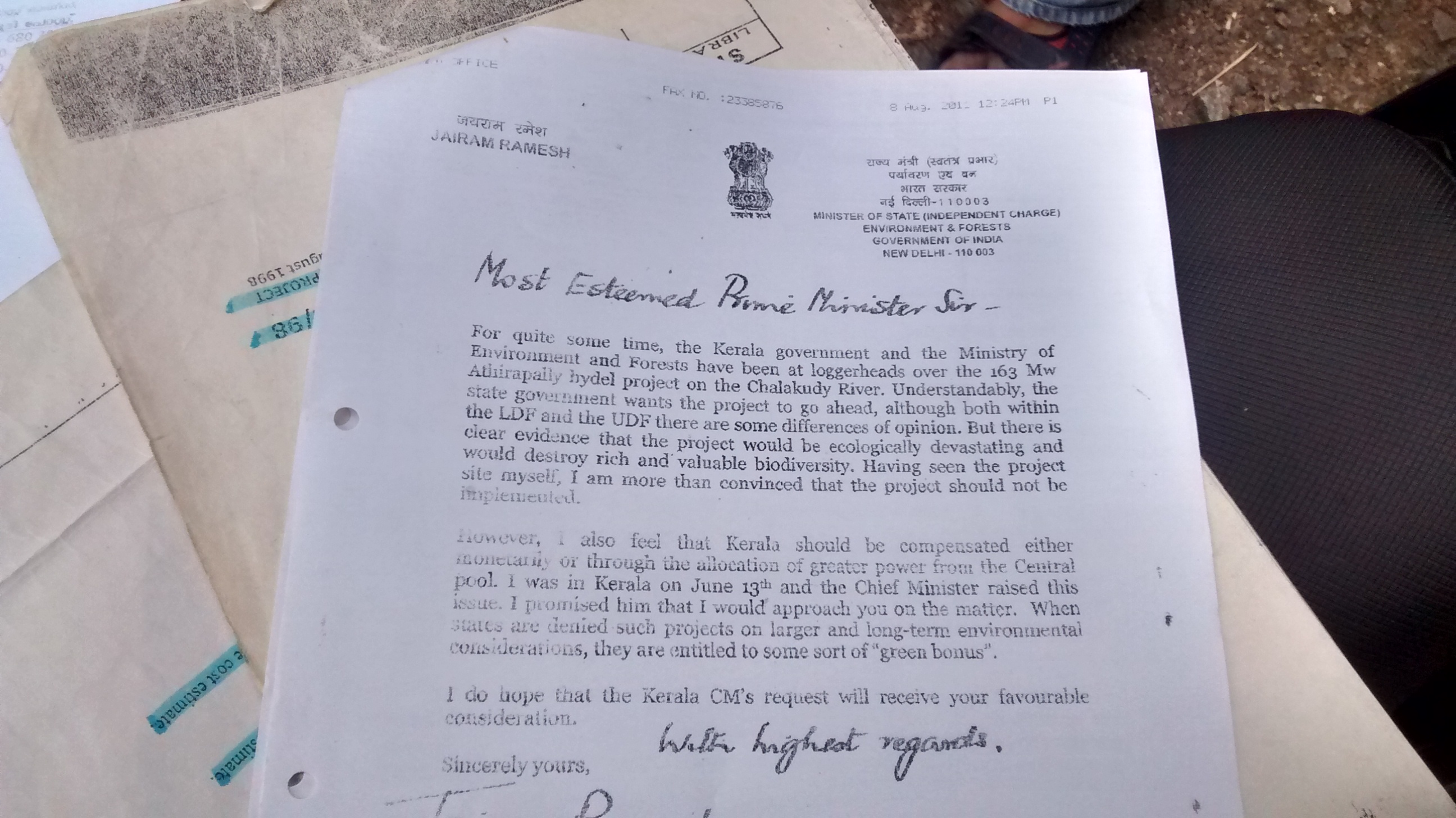
Who wants this project to be executed?
Pinarayi Vijayan is not new to Kerala politics: two decades before he became the Chief Minister of Kerala, he was the electricity minister of Kerala, and it was during his term that this project was revived, and the reasons are said to be many, one of them being his alleged role in promoting the Canadian company SNC-Lavalin, which had been hired as a consultant for this project. The relationship between Vijayan and Lavalin was the subject of a high-profile court case in which the CBI, unsuccessfully, tried to nail Vijayan for allotting undue favours to Lavalin in lieu of a donation for a cancer hospital in Malabar. But for this project, what is even more interesting is that Lavalin prepared a report in August 1998 about the feasibility of the Athirapally project, and even the company had raised serious objections. The report, a copy of which is available with Twocircles.net, says, “If Athirapally is operated as a time peaking plant, this may have serious impacts on the river flow regulation downstream, which may require another dam downstream to regulate the flow.” Before the CPI (M) came to power, the Congress too seemed to have shelved this project, not least because Jairam Ramesh, the Minister of State (Independent) Environment and Forests, had written to the then Prime Minister in no uncertain words that the project would have a catastrophic impact on the environment and thus, it must not be implemented. But clearly, Vijayan seems to be seeing this as a project unfinished and is hell bent to go ahead with the project.
But, as he has found out time and again, people in Kerala rarely accept the government’s orders if they feel wronged with it. And the residents of Vazhachal, under the leadership of a fiery young woman, Geetha, are likely to give him a lot more to think over, as we shall see in the second part.
